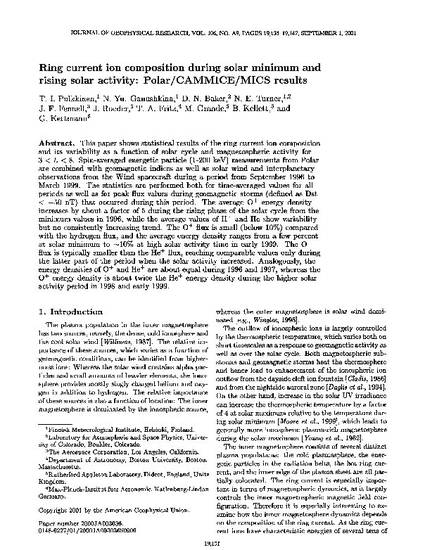
This paper shows statistical results of the ring current ion composition and its variability as a function of solar cycle and magnetospheric activity for 3 < L < 8. Spin-averaged energetic particle (1-200 keV) measurements from Polar are combined with geomagnetic indices as well as solar wind and interplanetary observations from the Wind spacecraft during a period from September 1996 to March 1999. The statistics are performed both for time-averaged values for all periods as well as for peak flux values during geomagnetic storms (defined as Dst < -50 nT) that occurred during this period. The average O+ energy density increases by about a factor of 5 during the rising phase of the solar cycle from the minimum values in 1996, while the average values of H+ and He show variability but no consistently increasing trend. The O+ flux is small (below 10%) compared with the hydrogen flux, and the average energy density ranges from a few percent at solar minimum to ∼10% at high solar activity time in early 1999. The O+ flux is typically smaller than the He+ flux, reaching comparable values only during the latter part of the period when the solar activity increased. Analogously, the energy densities of O+ and He+ are about equal during 1996 and 1997, whereas the O+ energy density is about twice the He+ energy density during the higher solar activity period in 1998 and early 1999.
